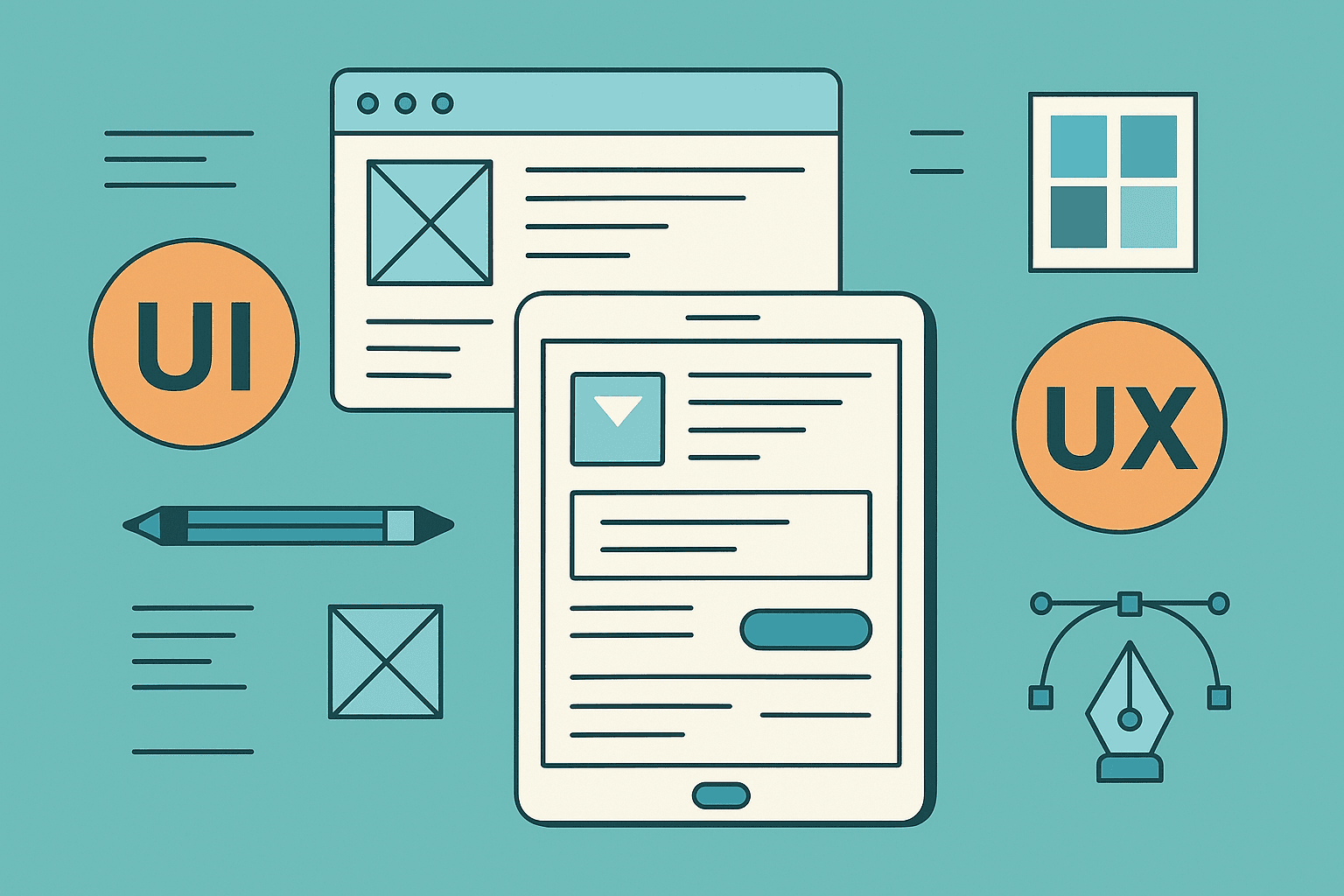The Role of UI/UX in Building Conversion-Ready Web Applications

Introduction:
A great product idea can fall flat if the user interface isn’t intuitive or the experience isn’t seamless. In 2025, UI/UX design has become a critical factor in determining whether users stay, engage, and convert—or bounce within seconds.
For startups and enterprises alike, investing in UI/UX design for web applications is not just about aesthetics—it's about functionality, clarity, and performance. Let’s explore how good UI/UX impacts your web app’s success and why it directly affects conversions.
Why UI/UX Matters More Than Ever
Today’s users expect apps to be fast, easy to use, and visually clean. Whether they’re comparing dashboards, checking out products, or filling forms, your design choices can make or break the experience.
Well-designed UI/UX leads to:
- Higher user retention
- Faster task completion
- Increased user satisfaction
- Higher conversion rates and ROI
Keywords: UI/UX importance, web application engagement, user-centered design
Key UI/UX Principles That Drive Conversions
1.
Users should instantly understand what your app does and how to use it. Complex layouts or overloaded interfaces create friction. Keep interfaces clean, avoid visual clutter, and prioritize usability.
2.
Consistency in colors, typography, icons, and button styles reinforces trust and improves recognition. It also reduces the cognitive load on users navigating your web app.
3.
Your application must function perfectly across devices—desktops, tablets, and smartphones. Mobile users now account for a large portion of web traffic and conversions.
Keywords: responsive UI, mobile-first web app design
4.
Design is not just visual—it also impacts speed. Optimizing images, avoiding heavy animations, and ensuring smooth transitions directly affects bounce rates and session length.
5.
Small details like hover effects, loading indicators, and success messages make users feel in control and enhance trust in your app.
Keywords: interaction design, user feedback UX
How UI/UX Impacts Conversion Metrics
Your app’s UI/UX directly influences key performance indicators (KPIs) such as:
- Conversion Rate – Clear CTAs and easy navigation drive more actions.
- Time on Page – Better layout and readability keep users engaged.
- Bounce Rate – A smooth onboarding flow reduces early exits.
- Customer Lifetime Value (CLTV) – Great experience leads to repeat users.
Example: A well-designed pricing page with clearly segmented plans and focused CTA buttons can significantly increase signups or trials.
Trends in UI/UX Design for 2025
To stay competitive, follow these modern UI/UX trends:
- Dark mode options for user comfort
- Accessibility-first design following WCAG 2.2 standards
- Minimalist, content-focused layouts
- Data visualization UX for dashboards and analytics apps
- AI-enhanced personalization in interfaces
Keywords: UI/UX trends 2025, accessible web applications, minimalist UI
How Floatinity Delivers Impactful UI/UX
At Floatinity, we treat UI/UX design as a core pillar of our product development strategy. Our design-first approach ensures:
- Intuitive user journeys aligned with business goals
- Prototypes and wireframes for early feedback
- Accessibility and performance-driven design
- Integration with development using tools like Figma, Zeplin, and Storybook
We specialize in building conversion-ready web applications that help businesses grow—not just look good.
Final Thoughts
Design is not just decoration—it’s a strategic tool. The difference between a user bouncing or converting often comes down to how the product feels and functions. By prioritizing UI/UX from day one, you ensure your web application delivers both value and experience.
Planning to launch or revamp a web app? Talk to Floatinity and let us craft a user experience that drives results. Follow us on LinkedIn for more insights into UI/UX and web product design.


